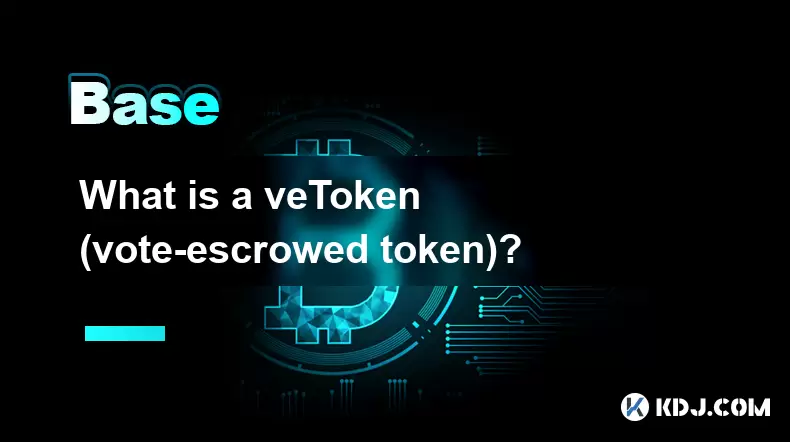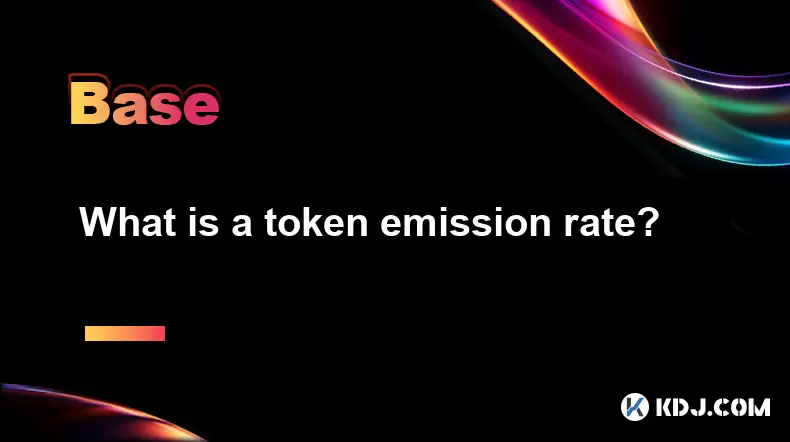-
 Bitcoin
Bitcoin $108,562.4295
0.46% -
 Ethereum
Ethereum $2,533.9553
1.52% -
 Tether USDt
Tether USDt $1.0002
-0.01% -
 XRP
XRP $2.2542
2.23% -
 BNB
BNB $662.4567
1.48% -
 Solana
Solana $151.4114
3.48% -
 USDC
USDC $0.9999
0.00% -
 TRON
TRON $0.2860
0.91% -
 Dogecoin
Dogecoin $0.1685
3.72% -
 Cardano
Cardano $0.5809
1.63% -
 Hyperliquid
Hyperliquid $39.2916
1.85% -
 Sui
Sui $2.8874
0.85% -
 Bitcoin Cash
Bitcoin Cash $496.5801
2.72% -
 Chainlink
Chainlink $13.3582
2.48% -
 UNUS SED LEO
UNUS SED LEO $9.0279
0.07% -
 Avalanche
Avalanche $18.0773
2.30% -
 Stellar
Stellar $0.2426
3.05% -
 Toncoin
Toncoin $2.9086
6.01% -
 Shiba Inu
Shiba Inu $0.0...01170
2.97% -
 Hedera
Hedera $0.1587
3.47% -
 Litecoin
Litecoin $87.4596
1.13% -
 Monero
Monero $317.0425
0.73% -
 Polkadot
Polkadot $3.3778
1.90% -
 Dai
Dai $0.9999
-0.01% -
 Ethena USDe
Ethena USDe $1.0001
-0.01% -
 Bitget Token
Bitget Token $4.4095
0.63% -
 Uniswap
Uniswap $7.3593
6.80% -
 Pepe
Pepe $0.0...09910
3.64% -
 Aave
Aave $274.7388
2.68% -
 Pi
Pi $0.4607
0.48%
What is a veToken (vote-escrowed token)?
veTokens, like veCRV and veBAL, lock native tokens to grant voting power and rewards, aligning long-term governance incentives in DeFi protocols.
Jul 07, 2025 at 02:51 am

Understanding the Concept of veToken
A veToken, short for vote-escrowed token, is a type of governance token used in decentralized finance (DeFi) protocols to align long-term incentives and ensure that token holders are committed to the future development and stability of the platform. Unlike standard governance tokens, which often allow immediate transfer and voting rights, veTokens require users to lock their native tokens for a certain period to receive them.
This locking mechanism ensures that only those who have a vested interest in the protocol’s long-term success can influence decision-making. In return for locking up their assets, users receive veTokens, which grant them proportional voting power over governance proposals and sometimes entitle them to revenue-sharing or yield boosts within the ecosystem.
How veTokens Are Created
To obtain a veToken, a user must first hold the native token of the DeFi protocol. For example, on the Curve Finance platform, users lock CRV tokens to receive veCRV. The process typically involves interacting with a dedicated smart contract through a wallet like MetaMask or WalletConnect.
The steps are as follows:
- Connect your wallet to the protocol's official website.
- Navigate to the vote-escrow section.
- Approve the amount of native token you wish to lock.
- Choose a lock duration (usually ranging from weeks to years).
- Confirm the transaction via your wallet.
Once completed, the system mints the corresponding veToken balance to the user's address. The longer the lock-up period, the more voting power the user receives, encouraging long-term commitment.
The Role of veTokens in Governance
One of the primary purposes of veTokens is to enable decentralized governance. Holders of veTokens can propose and vote on key decisions such as fee distribution, parameter changes, and integration of new assets. Each vote is weighted by the amount of veToken held and the remaining lock duration.
For instance, if two users each hold 10,000 CRV, but one has locked theirs for four years while the other has locked for one year, the former will have significantly more voting power. This design discourages short-term manipulation and promotes thoughtful, community-driven development.
Additionally, some platforms offer bribes or incentives to veToken holders who support specific proposals, creating an economic layer around governance participation.
Benefits of Holding veTokens
Beyond governance, holding veTokens often comes with tangible benefits:
- Revenue sharing: Many protocols distribute a portion of fees or rewards directly to veToken holders.
- Boosted yields: Stakers or liquidity providers may earn higher returns when they also hold veTokens.
- Exclusive privileges: Some platforms reserve special features or early access for veToken holders.
These benefits incentivize users not only to hold but also to actively participate in shaping the ecosystem, reinforcing the protocol’s decentralization and sustainability.
However, it's important to note that once tokens are locked into a veToken contract, they become illiquid until the lock expires. Users must weigh the potential gains against the opportunity cost of not being able to trade or use those tokens elsewhere during the lock-up period.
Examples of veToken Implementations
Several prominent DeFi protocols have adopted veToken models to enhance governance dynamics:
- Curve Finance: Uses veCRV for voting on gauge weights, emissions, and treasury allocations.
- Balancer: Introduced veBAL, where users lock BAL tokens to gain voting rights and boosted yield opportunities.
- Solidly (and forks): Popularized the ve(3,3) model, where veToken holders earn the majority of protocol revenue and emissions.
Each implementation varies slightly in mechanics, but all share the common goal of ensuring that governance power is distributed among users who are most invested in the protocol's future.
Technical Aspects of veToken Contracts
Under the hood, veToken contracts are built using Ethereum-compatible smart contract standards, typically extending ERC-20 or ERC-721 functionality. The core logic revolves around time-weighted balances—where voting power diminishes linearly as the lock period nears completion.
Key functions include:
create_lock(): Locks native tokens and assigns initial voting power.increase_amount(): Allows additional deposits without changing the lock end date.increase_unlock_time(): Extends the lock duration for increased voting weight.balanceOfAtTime(): Returns the voting power at a specific timestamp for governance checks.
These functions ensure that the veToken system remains transparent, auditable, and resistant to manipulation. Developers and auditors often scrutinize these contracts to prevent vulnerabilities like reentrancy attacks or incorrect balance calculations.
Frequently Asked Questions
Q1: Can I transfer my veTokens to another wallet?
Yes, veTokens are non-transferable because they represent locked-up positions tied to specific addresses. However, you can unlock your original tokens before the lock expiration (with possible penalties) and then transfer them freely.
Q2: What happens if I unlock my tokens before the lock period ends?
Unlocking early typically results in a loss of voting power and any accrued rewards. Some protocols impose penalties or delay the release of funds to discourage premature unlocking.
Q3: How do veTokens affect liquidity pools or staking yields?
Some platforms offer boosted rewards to users who stake or provide liquidity while also holding veTokens. These boosts are usually calculated based on the proportion of veTokens relative to total supply.
Q4: Are veTokens subject to impermanent loss?
No, veTokens themselves do not expose users to impermanent loss. That risk applies to liquidity providers in AMMs, not to governance token holders. However, veToken holders may miss out on alternative investment opportunities due to locked funds.
Disclaimer:info@kdj.com
The information provided is not trading advice. kdj.com does not assume any responsibility for any investments made based on the information provided in this article. Cryptocurrencies are highly volatile and it is highly recommended that you invest with caution after thorough research!
If you believe that the content used on this website infringes your copyright, please contact us immediately (info@kdj.com) and we will delete it promptly.
- Elon Musk, Andrew Yang, and Polymarket: What's the Buzz?
- 2025-07-07 10:30:12
- Lightchain AI's Bonus Round: The Final Chance Before Mainnet & Ecosystem Tools
- 2025-07-07 10:30:12
- TON Foundation, UAE Golden Visa, and Toncoin Staking: A New Chapter in Crypto Residency?
- 2025-07-07 10:50:12
- Altcoin Prices, Institutional Investors, and the Ethereum Rotation: What's the Deal?
- 2025-07-07 10:50:12
- TON Coin, Golden Visa, and UAE Denial: What's the Real Deal?
- 2025-07-07 10:55:12
- PEPE's Bullish Trend: Riding the 50% Gain Wave?
- 2025-07-07 10:55:12
Related knowledge

What is a user-generated content (UGC) NFT platform?
Jul 04,2025 at 01:49pm
Understanding the Concept of a UGC NFT PlatformA user-generated content (UGC) NFT platform is a digital marketplace or ecosystem where users can create, mint, and trade non-fungible tokens (NFTs) that represent ownership of original digital content they produce. Unlike traditional NFT platforms where creators often include professional artists or develo...

What is composability in DeFi?
Jul 06,2025 at 04:07pm
Understanding the Concept of Composability in DeFiComposability in DeFi refers to the ability of decentralized finance protocols and smart contracts to interact seamlessly with one another, much like building blocks that can be combined in various ways to create new financial products and services. This concept is a core innovation within the DeFi ecosy...

What is a "crypto primitive"?
Jul 05,2025 at 10:14pm
Defining the Concept of a Crypto PrimitiveIn the context of blockchain and cryptocurrency, a crypto primitive refers to a fundamental building block or foundational element used in constructing decentralized systems and cryptographic protocols. These primitives are essential for enabling secure transactions, consensus mechanisms, and smart contract exec...

What is a fair launch?
Jul 05,2025 at 07:31pm
Understanding the Concept of a Fair LaunchA fair launch refers to the release of a cryptocurrency or blockchain project in a manner that ensures equal opportunity for all participants. Unlike traditional token launches, which may involve private sales, venture capital funding, or pre-mining, a fair launch emphasizes transparency and decentralization. In...

What is a token emission rate?
Jul 07,2025 at 02:51am
Understanding the Basics of Token Emission RateIn the realm of cryptocurrencies, token emission rate refers to the speed or frequency at which new tokens are generated and released into circulation within a blockchain network. This concept is fundamental in understanding how certain blockchain ecosystems manage inflation, incentivize participants, and m...

What is a cliff in tokenomics?
Jul 05,2025 at 07:18pm
Understanding the Concept of a Cliff in TokenomicsIn the world of cryptocurrency and blockchain, tokenomics plays a pivotal role in shaping the economic behavior of a digital asset. One of the key mechanisms used to manage token distribution is known as a cliff. This concept is commonly applied in projects that include vesting schedules for tokens, espe...

What is a user-generated content (UGC) NFT platform?
Jul 04,2025 at 01:49pm
Understanding the Concept of a UGC NFT PlatformA user-generated content (UGC) NFT platform is a digital marketplace or ecosystem where users can create, mint, and trade non-fungible tokens (NFTs) that represent ownership of original digital content they produce. Unlike traditional NFT platforms where creators often include professional artists or develo...

What is composability in DeFi?
Jul 06,2025 at 04:07pm
Understanding the Concept of Composability in DeFiComposability in DeFi refers to the ability of decentralized finance protocols and smart contracts to interact seamlessly with one another, much like building blocks that can be combined in various ways to create new financial products and services. This concept is a core innovation within the DeFi ecosy...

What is a "crypto primitive"?
Jul 05,2025 at 10:14pm
Defining the Concept of a Crypto PrimitiveIn the context of blockchain and cryptocurrency, a crypto primitive refers to a fundamental building block or foundational element used in constructing decentralized systems and cryptographic protocols. These primitives are essential for enabling secure transactions, consensus mechanisms, and smart contract exec...

What is a fair launch?
Jul 05,2025 at 07:31pm
Understanding the Concept of a Fair LaunchA fair launch refers to the release of a cryptocurrency or blockchain project in a manner that ensures equal opportunity for all participants. Unlike traditional token launches, which may involve private sales, venture capital funding, or pre-mining, a fair launch emphasizes transparency and decentralization. In...

What is a token emission rate?
Jul 07,2025 at 02:51am
Understanding the Basics of Token Emission RateIn the realm of cryptocurrencies, token emission rate refers to the speed or frequency at which new tokens are generated and released into circulation within a blockchain network. This concept is fundamental in understanding how certain blockchain ecosystems manage inflation, incentivize participants, and m...

What is a cliff in tokenomics?
Jul 05,2025 at 07:18pm
Understanding the Concept of a Cliff in TokenomicsIn the world of cryptocurrency and blockchain, tokenomics plays a pivotal role in shaping the economic behavior of a digital asset. One of the key mechanisms used to manage token distribution is known as a cliff. This concept is commonly applied in projects that include vesting schedules for tokens, espe...
See all articles

























































































